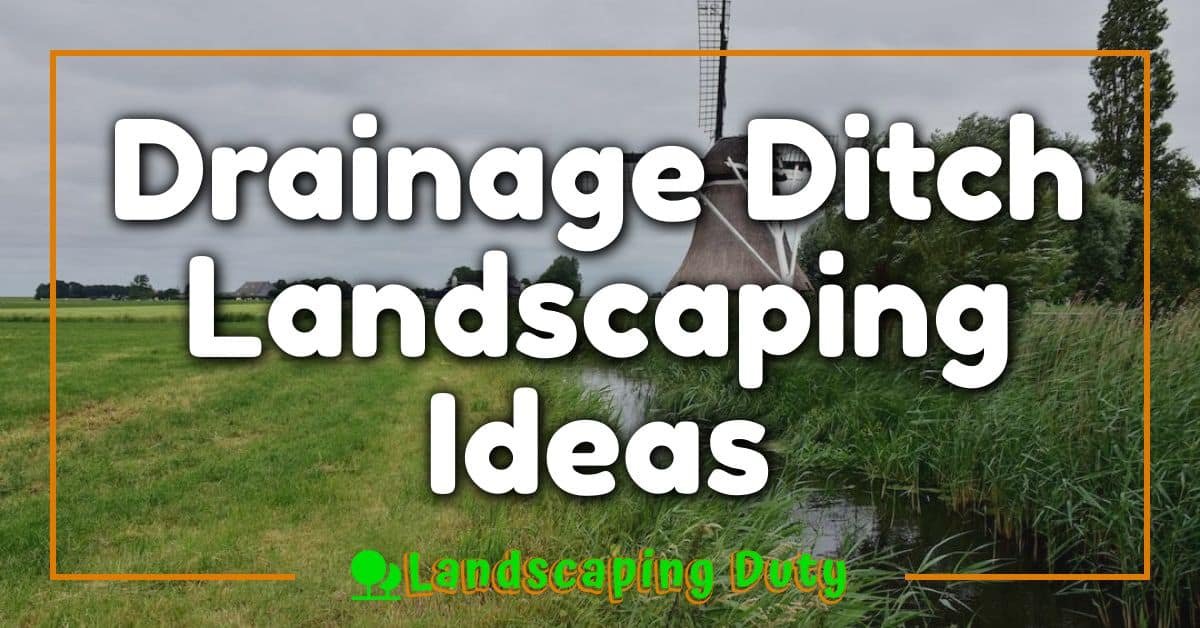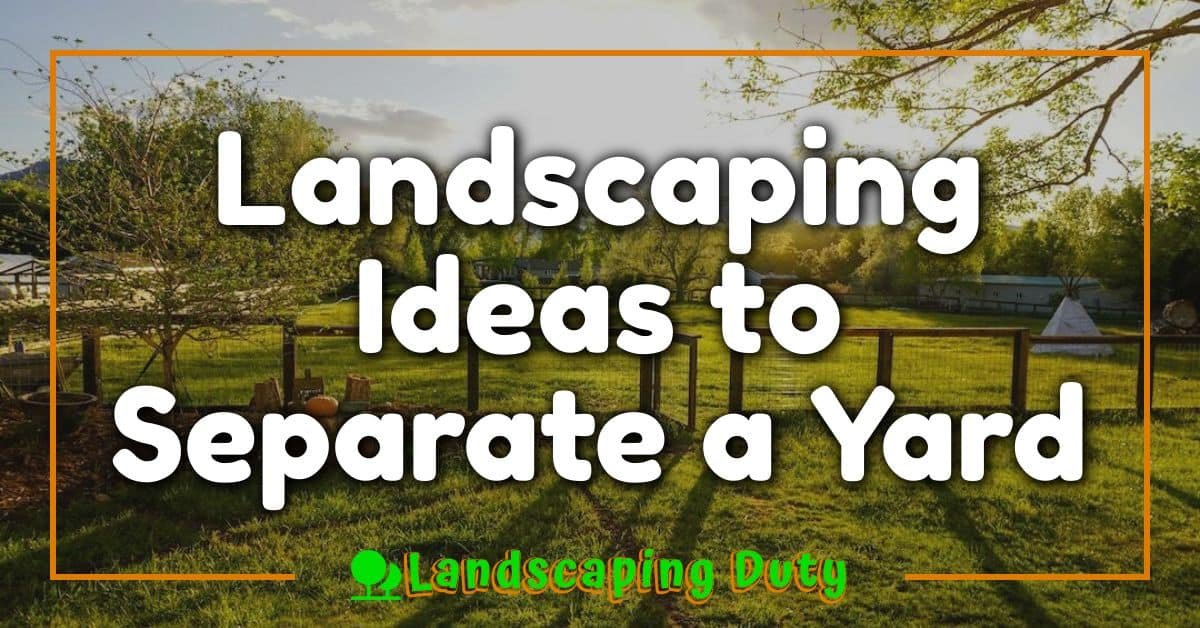Ah, Ohio! The Buckeye State is not just known for its rich history and friendly folks, but also for the stunning landscapes that adorn its residential yards. If you’re an Ohioan or planning to be one soon, you’ll appreciate the magic of a well-crafted landscape right in your backyard. Especially when it’s designed to withstand Ohio’s diverse climate and enhance the natural beauty of your home.

Landscaping in Ohio can be an exciting adventure. You’ve got four distinct seasons to play with – each bringing its own charm and challenges. But don’t worry about getting overwhelmed by choices; we’re here to help you navigate through tons of inspiring ideas that will transform your yard into a showstopper!
From vibrant flower beds that shout springtime splendor, to rustic fire pits made for those cozy fall evenings – there’s something for every season and every taste in our treasure trove of ideas. So sit back, sip on some sweet iced tea (or hot cocoa if it’s winter), and let’s embark on this landscaping journey together!
Understanding Ohio’s Climate for Landscaping
Before you grab your shovel and start turning over soil, let’s take a moment to understand the climate in Ohio. It’s no secret that Ohio experiences a wide range of weather conditions throughout the year. You’ve got your hot, humid summers followed by cold, snowy winters. And don’t forget about those mild springs and autumns mixed in between! All these fluctuations can make landscaping a bit tricky if you’re not familiar with the state’s unique climate.
Ohio falls into the USDA hardiness zones 5b through 6b, which means average winter temperatures can drop as low as -15 to -10 degrees Fahrenheit. What does this mean for you? Well, it means you’ll need to select plants that can withstand these chilly temperatures. If not, come springtime, you might find yourself with a yard full of dead or dying plants.
Now let’s talk about summer. With temperatures reaching up to 90 degrees Fahrenheit (occasionally higher), it seems like just about any plant should thrive right? Not exactly! The high humidity levels often experienced in Ohio during the summer months can lead to fungal diseases in many plant species.
Plus there is also the matter of precipitation. On average, Ohio receives about 38 inches of rain annually spread fairly evenly throughout the year. But remember – averages don’t always paint an accurate picture! Some years may see significantly more rainfall than others which could potentially waterlog your plants and create all sorts of other problems.
- Hardiness zones: 5b – 6b
- Winter lows: -15 to -10 degrees F
- Summer highs: Up to 90 degrees F (or higher)
- Annual rainfall: ~38 inches
Armed with this information on Ohio’s climate characteristics, now it’s time for you get out there and create that dream landscape! Choose wisely though; taking into consideration the state’s varying climate conditions can make a world of difference in the success of your landscaping efforts. Happy digging!
Choosing the Right Plants for Your Ohio Yard
Picking just the right plants for your yard can be a bit of a challenge, but don’t fret. We’re here to help you navigate through this. You see, Ohio’s climate is predominantly humid continental, which means it experiences hot summers and cold winters. This type of weather plays a significant factor in selecting plants that will thrive best in your backyard.
Let’s dive into some specifics! Ohio falls primarily within USDA Hardiness Zones 5 and 6. Are you wondering what these zones mean? They are simply guidelines provided by the U.S Department of Agriculture to help gardeners identify which plants are most likely to endure the winter temperatures in their area.
To break things down further:
- Zone 5: This zone mostly covers Northern Ohio with minimum temperatures ranging from -20°F to -10°F.
- Zone 6: For those living in Southern Ohio, this zone applies with minimum temperatures varying between -10°F and 0°F.
So, what does this mean for your plant selection?
Well, if you’re residing in Northern Ohio (Zone 5), some great choices would include Coneflowers (Echinacea purpurea), Black Eyed Susans (Rudbeckia hirta) or even Hostas (Hosta spp.). These hardy perennials can withstand the lower temperature ranges without much fuss!
Now, if you call Southern Ohio home (Zone 6), consider adding Coral Bells (Heuchera americana), Daylilies (Hemerocallis spp.) or Blue Star Junipers (Juniperus squamata ‘Blue Star’). These resilient varieties can handle slightly warmer winters while adding charm and color to your landscape.
But hey, don’t limit yourself just yet! There’s an abundance of other exciting native options like Redbud Trees (Cercis Canadensis) or Wild Geraniums (Geranium maculatum). These plants not only enhance your yard’s beauty but also promote local biodiversity.
Remember, the key to a thriving Ohio yard is selecting plants that love your local climate as much as you do. So go ahead, get creative and watch your garden bloom!
Incorporating Native Ohio Plants in Your Landscape
You’re thinking about sprucing up your yard, huh? Well, buddy, you’ve come to the right place! Let’s dive into how you can beautifully transform your landscape with native Ohio plants. Don’t worry – we’re not talking about a complete overhaul here, but rather subtle touches that’ll make all the difference.
Imagine walking into your backyard and being greeted by vibrant Cardinal Flowers swaying gently in the wind. It’s not just their brilliant red color that’ll wow you – it’s also their ability to attract hummingbirds. Indeed, these native beauties are surefire ways to bring life and excitement into your garden!
But hey, don’t stop at flowers. How about adding some Eastern Redbud trees? These small trees explode with bright pink blossoms in early spring providing a stunning contrast against any evergreens you might have. Plus they’re tough as nails – capable of thriving even in Ohio’s sometimes harsh winters.
« Missouri Xeriscape Ideas: Your Ultimate Guide to Water-Saving Landscaping Yard Landscaping Ideas in Pennsylvania: Your Guide to a Stunning Outdoor Space »
And let’s talk ground cover solutions for those shady spots under trees or along north-facing walls where grass struggles to grow. Wild ginger could be your new best friend! This low-maintenance plant carpets the ground with glossy heart-shaped leaves and even produces unique bell-shaped brownish-red flowers.
Incorporating native plants provides a host of benefits:
- They help conserve water since they are adapted to local climate conditions.
- They improve soil health.
- They provide shelter and food for local wildlife.
- They require less maintenance compared to non-native species.
So there you have it! A few pointers on how using native Ohio plants can give your landscape design an edge while contributing positively towards environmental conservation efforts. Now get out there and start transforming that yard of yours into a natural haven!
Low-Maintenance Landscaping Ideas in Ohio
You’re tired. You’ve worked all week, and the last thing you want to do is spend all weekend weeding, mowing, and trimming. We get it! That’s why we’re sharing some low-maintenance landscaping ideas for your Ohio yard that’ll give you more time for what really matters—enjoying your outdoor space.
Let’s start with native plants. They’re not just easy on the eyes; they’re also tough as nails! Native species have adapted to local weather conditions over centuries, which means they need less water, fewer nutrients, and practically no coddling. Some hardy natives in Ohio include Black-Eyed Susans, Purple Coneflowers, or Cardinal Flowers—all of which will add a splash of color without demanding too much of your time.
Ever considered mulching? If not, maybe now’s the time. Mulch can be a lifesaver when it comes to reducing weeds and retaining soil moisture—meaning less watering for you! Plus, it breaks down over time enriching your soil with organic matter. Just spread a layer around plants or trees and voila—you’ve got an attractive natural barrier against those pesky weeds!
How about swapping out some grass for ground covers? These leafy plants grow quickly to form mats that choke out weeds while adding greenery. Think creeping thyme or sweet woodruff—both are great options suited to Ohio’s climate.
And don’t forget hardscaping elements like patios, walkways or rock gardens—they require zero watering! By incorporating these into your landscape design along with drought-tolerant shrubs like junipers or yuccas—you can cut back on maintenance while still having a yard that turns heads.
So there you go—a few practical yet beautiful ways to take some of the work out of maintaining an inviting landscape in Ohio. Remember: working smarter—not harder—is the key to enjoying your outdoor space all year round.
Creating an Organic Garden in Your Ohio Yard
Ever thought about having your own organic garden right in your backyard? Well, you’re not alone. Lots of folks in Ohio are turning their yards into lush, organic food havens. Why not join the club?
Now, before you get too excited, let’s talk about what it really means to go organic. It’s more than just avoiding pesticides and fertilizers; it’s about nurturing a healthy ecosystem where plants naturally thrive. You’ll want to start with rich, composted soil–the kind you can make yourself using kitchen scraps and yard waste. Got some coffee grounds or banana peels lying around? They’re perfect for compost!
In terms of what to plant, Ohio’s climate is great for growing all sorts of fruits and veggies like tomatoes, peppers, beans, and berries. You’ll want to choose varieties that are suited to our local conditions–ask at your nearby nursery if you’re unsure.
Here are a few tips for maintaining an organic garden:
- Rotate crops each season: This helps keep the soil fertile and prevents pests from settling in.
- Water wisely: Too much water can lead to disease; too little can stress plants out.
- Attract beneficial insects: Certain bugs (like ladybugs) can help control pests.
And there’s no need to worry if things don’t go perfectly right away! Gardening is a learning process; even seasoned pros face challenges now and then.
So why wait? Roll up those sleeves and start creating a healthier environment for both you and Mother Nature… one tomato at a time!
How to Use Hardscaping Elements Effectively
Let’s dive right into the heart of your Ohio yard transformation: hardscaping. Oh, you’re wondering what on earth is hardscaping? It’s any non-living element in your landscaping design, like rocks, bricks, and pavers. Now that we’ve cleared that up, let’s talk about using them effectively.
First things first–you gotta think about proportion and balance. You wouldn’t want an oversized boulder in a tiny space or a teeny pebble path stretching across a vast lawn. So keep it all balanced! A mix of large rocks with smaller stones can create an appealing contrast. Just remember to keep it proportional to the size of your yard.
Next on deck are pathways and patios. Think about where you’d want these elements before plunking down those paving stones willy-nilly. Pavers can direct foot traffic away from delicate plants and guide visitors through your garden wonderland. Patios provide a place for relaxation or outdoor dining while adding aesthetic appeal.
Don’t forget about retaining walls! These sturdy structures aren’t just functional; they can also be decorative if done correctly. Retaining walls made from stone or brick can add texture and color to your landscape while preventing soil erosion (Nobody wants their beautiful roses sliding down the hill!)
As for materials used in hardscaping, stone remains a popular choice due its versatility and durability but don’t discount wood or metal either – each brings its own unique charm to the table.
Remember folks, it’s not all about plants in landscaping – hardscape elements play an equally important role in giving your Ohio yard that WOW factor! So go ahead – get creative with those bricks, rocks and pavers!
Adding a Water Feature: An Exciting Idea for Ohio Yards
Have you ever thought about adding a water feature to your Ohio yard? If not, it’s time to start considering it! With their soothing sounds and mesmerizing movements, water features are becoming the must-have addition to yards across the Buckeye State. And guess what? They’re not just for show, they’ve got some pretty cool benefits too.
Can’t get enough of nature’s calming effect on your mind and soul? Well, having a water feature in your yard can amplify that feeling tenfold. The gentle babbling of a brook or the serene movement of koi in a pond can transform an ordinary space into an oasis of tranquility. Plus, these aquatic additions are known to attract wildlife like birds and butterflies, creating an enchanting atmosphere right in your backyard.
But let’s talk numbers for a moment. Did you know that landscaping with water features can increase property values by up to 15%? That means if you own a home valued at $200,000, adding a water feature could potentially add $30,000 to its worth!
| Home Value | Potential Increase |
|---|---|
| $200k | $30k |
So how do you go about choosing the perfect water feature for your yard? Here are some top choices among Ohio homeowners:
- Fountains: Compact and versatile – fountains are great for smaller spaces.
- Ponds: Ideal if you have ample space and love wildlife – ponds attract various species.
- Waterfalls: Best suited for sloped areas – they create eye-catching cascades.
Remember each type requires varying levels of maintenance. For instance, ponds might need regular cleaning while fountains require less upkeep.
Now it’s your turn! Start planning out where to put that fountain or pond in your landscape design today. Don’t forget to consider factors like sunlight exposure and proximity to electrical outlets. With a little bit of planning, you’ll have an Ohio yard that’s not just beautiful but also boosts your property value!
Conclusion: Crafting the Perfect Ohio Yard Landscape
Now, let’s wrap this up. You’ve made it to the end of our journey together, exploring the ins and outs of yard landscaping in Ohio. By now, you should have a bunch of ideas swirling around in your mind about how to create your perfect outdoor oasis.
Remember this isn’t a race – take your time to plan out each aspect. Whether you’re dreaming of a wildflower meadow or envisioning an elegant English garden, remember that it’s all about personal taste and what makes you happy.
Bask in the flexibility that comes with creating an Ohio landscape:
- You can incorporate native plants like Eastern Redbuds and Butterfly Weeds for some local flair.
- Maybe you’re more interested in setting up a cozy fire pit area for those chilly fall evenings.
- Or perhaps water features are calling your name. The gentle sounds of trickling water from a fountain or pond can turn any yard into a relaxing retreat.
It’s essential to consider maintenance too. If you’re not much into gardening or if time is limited, opt for low-maintenance designs that won’t require hours of upkeep.
Lastly, don’t forget about weather patterns unique to Ohio! With cold winters and hot summers, make sure your outdoor space can withstand various elements.
In conclusion (without starting the sentence with “in conclusion”), embarking on an Ohio landscaping project is truly exciting! It allows creativity to flow while adding value and beauty to your property. So go on now; grab those gardening gloves – the perfect Ohio yard landscape awaits!
Have fun planning and planting! Remember: Your yard is an extension of your home – make it uniquely yours.














